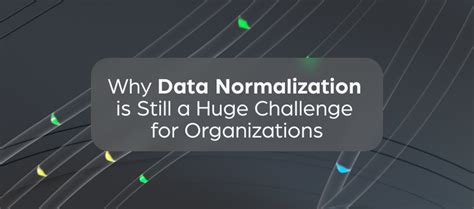In an era where data breaches have become increasingly common, understanding their legal ramifications and effective management strategies is crucial. This article delves into some of the most significant data breach cases, offering valuable legal insights and incident analysis. We will explore the profound implications these breaches have on organizations and individuals, examine the responses and strategies employed to mitigate damage, and assess the broader impact on businesses and consumers. Additionally, we will draw lessons from these cases to highlight best practices and discuss future trends to help organizations better prepare for and respond to potential data breaches.
Embark on a detailed exploration of this topic with alijyun.com
1. Overview of Major Data Breach Cases
Data breaches have shaken numerous organizations across various sectors, revealing vulnerabilities in data security. One notable case is the Equifax breach of 2017, where hackers exploited a vulnerability to access personal information of 147 million people, including Social Security numbers and credit details. This incident highlighted significant lapses in data protection practices and led to substantial legal and financial repercussions for Equifax.
Another major case was the Target breach of 2013, which compromised the credit card information of 40 million customers. The breach, resulting from malware installed on Target’s payment system, demonstrated the critical need for robust cybersecurity measures.
The 2014 Sony Pictures breach also stands out, where a cyberattack led to the release of sensitive emails and personal data

2. Legal Implications and Consequences
The legal implications of data breaches are profound and multifaceted, often resulting in significant consequences for affected organizations. In the wake of a data breach, companies face potential legal actions from both regulators and affected individuals. For instance, the Equifax breach led to a $700 million settlement to resolve claims brought by the Federal Trade Commission (FTC), Consumer Financial Protection Bureau (CFPB), and 50 U.S. states. This case highlighted the necessity for companies to adhere to stringent data protection standards and the severe financial repercussions of failing to do so.
Organizations may also face lawsuits from consumers whose personal data has been compromised. In the Target breach, affected individuals filed class-action lawsuits seeking compensation for the damages and losses incurred due to the breach. These legal actions often result in costly settlements or judgments against the company.
Additionally, data breaches can lead to regulatory fines and penalties. Under regulations like the General Data Protection Regulation (GDPR) and the California Consumer Privacy Act (CCPA), companies are required to implement robust data protection measures and report breaches within specific timeframes. Non-compliance with these regulations can result in substantial fines, further underscoring the importance of effective data security practices and legal preparedness.

3. Incident Response and Management
Effective incident response and management are crucial in mitigating the damage caused by data breaches. The first step in responding to a breach is to promptly identify and contain the incident. This involves activating an incident response team, which typically includes IT security experts, legal advisors, and communication specialists. The team works to isolate affected systems to prevent further unauthorized access and assess the extent of the breach.
Following containment, organizations must conduct a thorough investigation to understand how the breach occurred and identify the data compromised. This analysis helps in developing strategies to prevent similar incidents in the future. Clear communication is also essential; affected individuals should be promptly notified about the breach, including details on the type of data compromised and steps they can take to protect themselves.
Organizations should also review and enhance their security measures based on lessons learned from the incident. Implementing stronger encryption, regular security audits, and employee training on data protection can help in reducing vulnerability to future breaches. Effective incident management not only minimizes the immediate impact of a breach but also helps in rebuilding trust with consumers and stakeholders.

4. Impact on Consumers and Businesses
The impact of data breaches on both consumers and businesses can be extensive and far-reaching. For consumers, a data breach often results in the exposure of sensitive personal information, such as Social Security numbers, credit card details, and other private data. This can lead to identity theft, financial losses, and increased vulnerability to phishing attacks. Affected individuals may experience long-term consequences, including a prolonged need for credit monitoring and potential damage to their financial reputation.
For businesses, the fallout from a data breach can be equally severe. Companies face significant financial costs associated with breach response, including legal fees, regulatory fines, and settlement payouts. The breach can also result in reputational damage, eroding consumer trust and impacting brand loyalty. In some cases, businesses may experience a decline in sales and loss of customers due to concerns over data security.
Furthermore, data breaches often prompt increased scrutiny from regulators and may lead to stricter compliance requirements. Organizations may need to invest in enhanced security measures and undergo regular audits to ensure they meet legal and industry standards. The overall impact underscores the critical need for robust data protection strategies and proactive breach management.
5. Lessons Learned and Best Practices
The analysis of major data breach cases reveals several critical lessons and best practices for improving data security. First and foremost, proactive risk management is essential. Organizations must conduct regular security assessments and vulnerability scans to identify and address potential weaknesses before they can be exploited by attackers.
Implementing robust data protection measures, such as encryption and multi-factor authentication, can significantly reduce the risk of unauthorized access. Regular updates and patches to software and systems are crucial to defending against known vulnerabilities.
Developing and maintaining a comprehensive incident response plan is another key practice. This plan should outline clear procedures for detecting, containing, and managing data breaches. Effective communication strategies are also vital, including timely notifications to affected individuals and transparent reporting to regulatory bodies.
Employee training is critical in preventing breaches caused by human error. Regular training sessions on data protection best practices, phishing awareness, and secure handling of sensitive information can enhance overall security posture.
Finally, post-incident analysis should be conducted to learn from each breach. Understanding how and why a breach occurred allows organizations to refine their security measures and response strategies. Adopting these lessons and best practices can help mitigate future risks and strengthen overall data protection.
6. Future Trends and Predictions
As data breaches continue to evolve, several future trends and predictions are emerging in the realm of cybersecurity. One significant trend is the increasing use of artificial intelligence (AI) and machine learning to enhance threat detection and response. AI-powered systems can analyze vast amounts of data in real time, identifying suspicious activities and potential breaches more quickly and accurately than traditional methods.
Another trend is the growing emphasis on zero-trust security models. Instead of assuming that internal networks are secure, zero-trust models require continuous verification of all users and devices, regardless of their location. This approach minimizes the risk of insider threats and unauthorized access.
The rise of sophisticated cyberattacks, such as ransomware and advanced persistent threats (APTs), is likely to continue, driving organizations to invest more in advanced security technologies and threat intelligence. As attackers become more sophisticated, the need for adaptive and resilient security measures will grow.
Additionally, regulatory frameworks are expected to become more stringent. New and updated regulations will likely mandate more rigorous data protection standards and reporting requirements, compelling businesses to enhance their compliance efforts.
Finally, the integration of cybersecurity into broader business strategies will become increasingly important. Organizations will need to align their security practices with overall business goals to effectively manage risks and protect sensitive data.
In conclusion, data breaches pose significant risks with profound legal, financial, and operational impacts on both consumers and businesses. By learning from major breach cases and adopting best practices, organizations can enhance their security posture and better manage potential incidents. Staying ahead of future trends and regulatory changes will be crucial in safeguarding sensitive information and mitigating the consequences of data breaches.
alijyun.com

